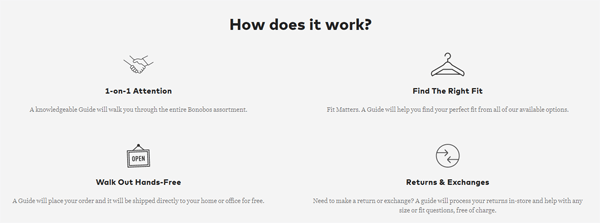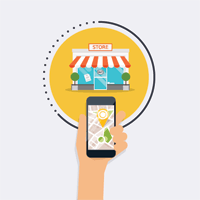2018 Ecommerce Strategy: 64% of Consumers Expect an Omnichannel Experience. How Will You Deliver?

by Maria Haggerty
16 Jan, 2023
In today's rapidly evolving ecommerce and retail landscape, one thing has become very clear-omnichannel is king and it's here to stay. According to New Store's 2017 Mobile Retail Report, brands must now address the omnichannel dilemma and figure out how to create a "true omnichannel experience, one in which your consumer can buy anywhere, at any time, through any channel, and still feel the same wonderful personalized experience throughout."
This year, we surveyed over 700 shoppers in order to understand the impact of shifting consumer behavior. Our internal research demonstrated that 64 percent of consumers now expect an omnichannel experience when they shop.
Though investments in omnichannel can be expensive, here are steps that smaller, emerging online brands can take to deliver the omnichannel experience that customers have come to expect, foster brand loyalty, and help ensure a successful selling year in 2018.
Invest in the "Showroom" Experience
Maintaining a physical retail presence is expensive. The convenience and ease of online shopping has cut into the bottom lines of many traditional brick-and-mortar brands and retailers, causing even established retailers like Bebe, Payless, and Sears to close some, or even all, of their physical locations this past year. But that doesn't mean that brands should completely abandon the idea of having a physical presence. A retail location allows customers to engage with your brand and your products in valuable ways that digital channels cannot.
Brands who started out exclusively as e-tailers, like the popular menswear brand Bonobos, are now opening small footprint showroom stores with limited or no stock. At Bonobos' "guideshops," customers can try on everything before they make any purchases. Staff is also on hand to guide customers through the purchase process. The biggest difference between their guideshops and traditional retailers is that buyable inventory is not held in store- rather is shipped straight to shoppers at home from a Bonobos fulfillment center.

Emerging brands can also take advantage of the benefits of physical showrooms through "pop-up" shops and short-term leases. Third party companies like Appear Hear can help brands find short-term leases in high-traffic locations, allowing them to reap the benefits of the in-store customer experience with less overhead, while a 3PL partner can help with order fulfillment.
Make Returns Easy
Returns are inevitable.Offering customers a convenient way to return products is a crucial aspect in building brand loyalty. Ease of returns is one of the first things shoppers think about before placing an online order. Our research found that 76.8 percent of customers value free returns and exchanges while 55 percent value the ability to make easy returns online.
Therefore, investing in a customer-friendly return policy is necessary. Providing pre-paid return labels in original packaging, or offering shoppers the opportunity to return items at a physical location can go a long way in showing your customers you care. When thinking omnichannel, reverse logistics needs to be factored in as well.
It's also important that brands put right technology in place to implement their return policy. Here are a few tips to keep in mind:
Automate warehouse return processes. Nothing bogs down returns like relying on manual warehouse processes. Automation cuts down on the time it takes to receive and catalog returns - and it's more accurate. With returns accepted in a quicker fashion,customers won't have to wait as long to receive their refunds. Use real-time reports to monitor return status. A lack of visibility into returns creates major bottlenecks. Use warehouse technology to generate real-time, up-to-the-minute reports regarding returned merchandise. As soon as products are received back in your warehouse, send customers an email or text message to let them know their return is being processed. Make sure you have enough staff on hand. As automated as your fulfillment center might be, human intervention is sometimes required to keep things running smoothly. Make sure you have enough staff after peak shopping period to handle the influx of returns. If you don't have enough personnel, working with a third-party logistics provider can help.
Learn What Keeps Your Customers Coming Back
Learning what is important to your consumer base is critical to engendering brand loyalty and driving repeat purchases. Within the omnichannel realm, there are technologies that brands can employ to capture data on their customers and their shopping preferences. .
According to Digital Commerce 360, consumers are three times more likely to make a purchase through an app than they are through a mobile website. Despite that fact, only 22 percent of brands have a shoppable app, and many are missing opportunities to engage with, and capture valuable data from their customers.
Similarly, Newstore's 2017 Mobile Retail Report found that while brands are coming to grips with responsive sites, the majority fail to fully capitalize on progressive Web technology. By mimicking apps and enabling functionality like push notifications, offline browsing and a faster overall experience, progressive Web technology has the ability to help brands more effectively capture data and customize the shopping experience for customers. All of these things engender trust and brand loyalty.
Embracing omnichannel should be a high priority for brands in order to keep up with evolving consumer expectations. Prioritizing ease of purchase, ease of returns, and customer immersion will be a step in the right direction toward happy, repeat customers in 2018.
 Maria Haggerty is CEO of
Dotcom Distribution, which provides B2C & B2B fulfillment and logistic services to emerging and established ecommerce brands. The study outlined above can be
downloaded here.
Maria Haggerty is CEO of
Dotcom Distribution, which provides B2C & B2B fulfillment and logistic services to emerging and established ecommerce brands. The study outlined above can be
downloaded here.
This year, we surveyed over 700 shoppers in order to understand the impact of shifting consumer behavior. Our internal research demonstrated that 64 percent of consumers now expect an omnichannel experience when they shop.
Though investments in omnichannel can be expensive, here are steps that smaller, emerging online brands can take to deliver the omnichannel experience that customers have come to expect, foster brand loyalty, and help ensure a successful selling year in 2018.
Invest in the "Showroom" Experience
Maintaining a physical retail presence is expensive. The convenience and ease of online shopping has cut into the bottom lines of many traditional brick-and-mortar brands and retailers, causing even established retailers like Bebe, Payless, and Sears to close some, or even all, of their physical locations this past year. But that doesn't mean that brands should completely abandon the idea of having a physical presence. A retail location allows customers to engage with your brand and your products in valuable ways that digital channels cannot.
Brands who started out exclusively as e-tailers, like the popular menswear brand Bonobos, are now opening small footprint showroom stores with limited or no stock. At Bonobos' "guideshops," customers can try on everything before they make any purchases. Staff is also on hand to guide customers through the purchase process. The biggest difference between their guideshops and traditional retailers is that buyable inventory is not held in store- rather is shipped straight to shoppers at home from a Bonobos fulfillment center.

Emerging brands can also take advantage of the benefits of physical showrooms through "pop-up" shops and short-term leases. Third party companies like Appear Hear can help brands find short-term leases in high-traffic locations, allowing them to reap the benefits of the in-store customer experience with less overhead, while a 3PL partner can help with order fulfillment.
Make Returns Easy
Returns are inevitable.Offering customers a convenient way to return products is a crucial aspect in building brand loyalty. Ease of returns is one of the first things shoppers think about before placing an online order. Our research found that 76.8 percent of customers value free returns and exchanges while 55 percent value the ability to make easy returns online.
Therefore, investing in a customer-friendly return policy is necessary. Providing pre-paid return labels in original packaging, or offering shoppers the opportunity to return items at a physical location can go a long way in showing your customers you care. When thinking omnichannel, reverse logistics needs to be factored in as well.
It's also important that brands put right technology in place to implement their return policy. Here are a few tips to keep in mind:
Automate warehouse return processes. Nothing bogs down returns like relying on manual warehouse processes. Automation cuts down on the time it takes to receive and catalog returns - and it's more accurate. With returns accepted in a quicker fashion,customers won't have to wait as long to receive their refunds. Use real-time reports to monitor return status. A lack of visibility into returns creates major bottlenecks. Use warehouse technology to generate real-time, up-to-the-minute reports regarding returned merchandise. As soon as products are received back in your warehouse, send customers an email or text message to let them know their return is being processed. Make sure you have enough staff on hand. As automated as your fulfillment center might be, human intervention is sometimes required to keep things running smoothly. Make sure you have enough staff after peak shopping period to handle the influx of returns. If you don't have enough personnel, working with a third-party logistics provider can help.
Learn What Keeps Your Customers Coming Back
Learning what is important to your consumer base is critical to engendering brand loyalty and driving repeat purchases. Within the omnichannel realm, there are technologies that brands can employ to capture data on their customers and their shopping preferences. .
According to Digital Commerce 360, consumers are three times more likely to make a purchase through an app than they are through a mobile website. Despite that fact, only 22 percent of brands have a shoppable app, and many are missing opportunities to engage with, and capture valuable data from their customers.
Similarly, Newstore's 2017 Mobile Retail Report found that while brands are coming to grips with responsive sites, the majority fail to fully capitalize on progressive Web technology. By mimicking apps and enabling functionality like push notifications, offline browsing and a faster overall experience, progressive Web technology has the ability to help brands more effectively capture data and customize the shopping experience for customers. All of these things engender trust and brand loyalty.
Embracing omnichannel should be a high priority for brands in order to keep up with evolving consumer expectations. Prioritizing ease of purchase, ease of returns, and customer immersion will be a step in the right direction toward happy, repeat customers in 2018.
 Maria Haggerty is CEO of
Dotcom Distribution, which provides B2C & B2B fulfillment and logistic services to emerging and established ecommerce brands. The study outlined above can be
downloaded here.
Maria Haggerty is CEO of
Dotcom Distribution, which provides B2C & B2B fulfillment and logistic services to emerging and established ecommerce brands. The study outlined above can be
downloaded here.







